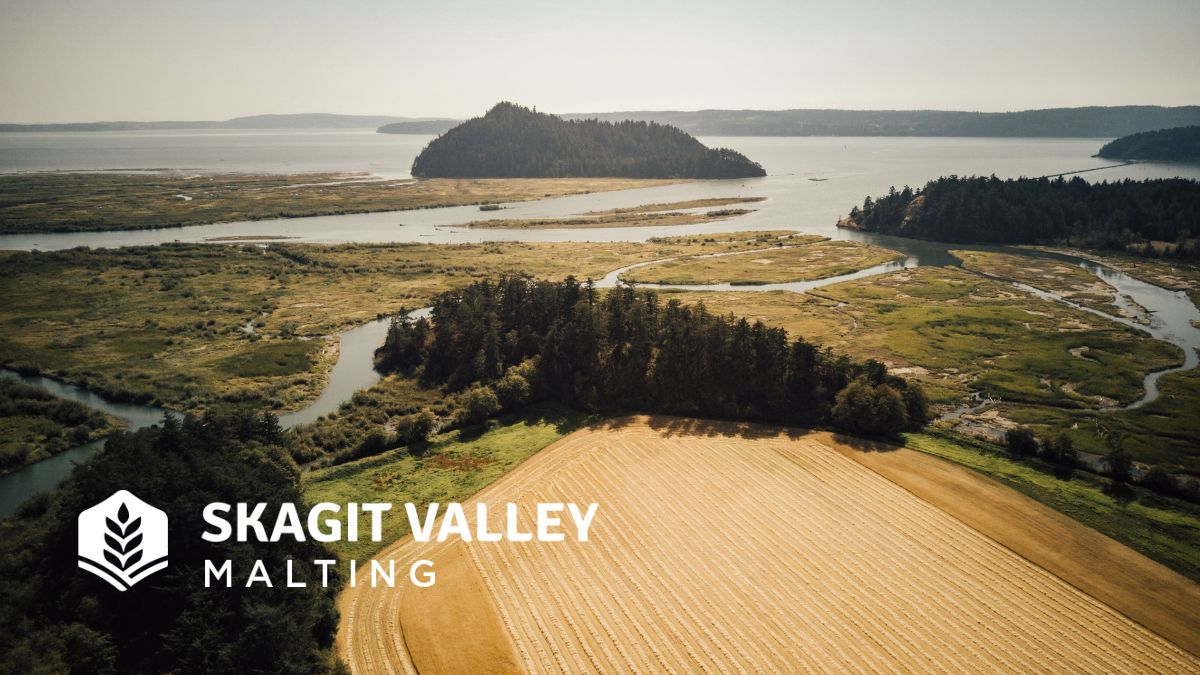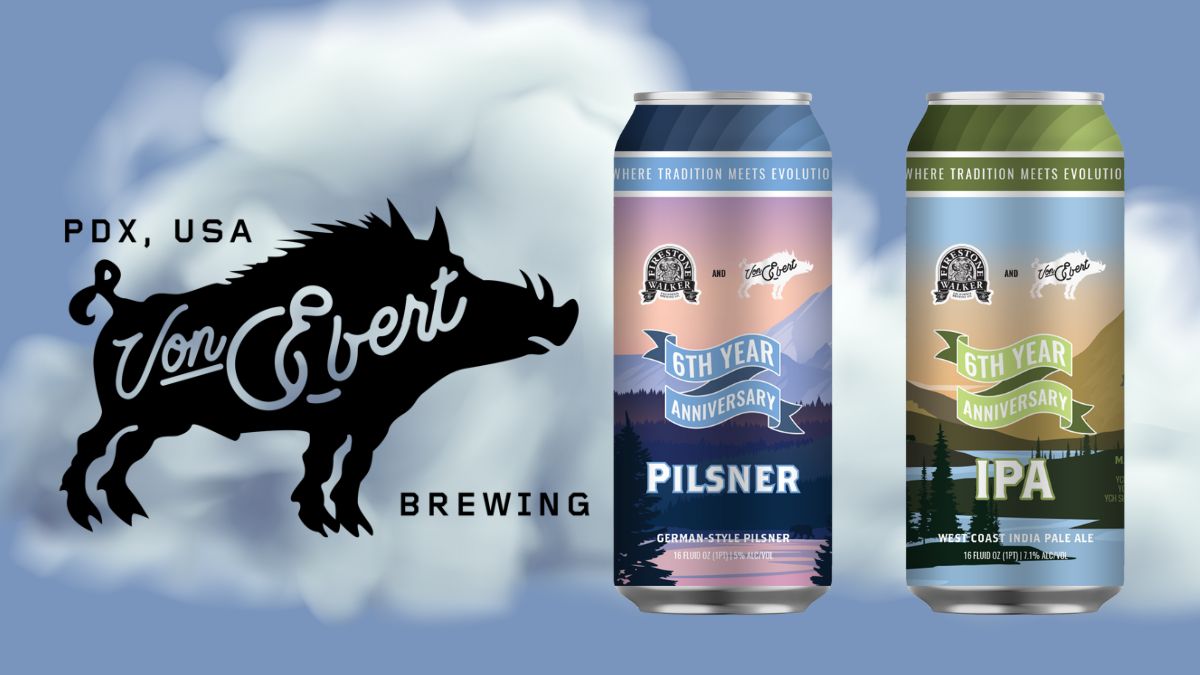Q&A with Skagit Valley Malting’s Eric Buist
A large part of what makes Pacific Northwest beer and spirits so distinctive is the grain that forms the base of these products. Skagit Valley Malting, based in Burlington, Washington, produces malted grain — mostly, but not limited to, barley — raised by local farmers that brewers, distillers and even bakers across the region employ as the foundation of their offerings.
With their house-built machinery and superior raw product, Skagit Valley Malting is an innovator in the craft malting space and is uniquely positioned to offer insights into the beer and spirits industry writ large.
Sip Magazine chatted with Eric Buist, Skagit Valley Malting’s marketing manager on a wide range of topics, including some basics of malting, what makes Skagit Valley Malting an industry leader and what the future holds for the company and the brewers and distillers they serve.
SIP: What is malt and malted grain, and what does it do flavor-wise or texture-wise to augment the products to which it is added?
Eric Buist: When we talk about malt, we’re typically talking about malted barley. Technically, anything that germinates can be malted, but the most common grain to malt is barley. Malt is created by tricking a barley seed into germinating; we create all of the natural processes in a controlled environment and allow nature to work. Once it has sprouted, we apply heat and stop the germination process while adding color and flavor through Maillard reactions. These processes allow brewers to use malt to add flavor, texture and sugar to suit their needs. That sugar, and some other nutrients in the malt, feed the yeast during fermentation to create the alcohol.
SIP: What is it specifically about the way Skagit Valley Malting produces its malt that makes it so unique and distinguishable from other maltsters in the region?
EB: SVM is a craft malthouse, which means we are small, grown locally and locally owned. Our goal, like that of all craft malthouses, is to add value to what is typically a cover crop. The Skagit Valley grows over 90 different crops. Barley and wheat have the lowest return for the growers, but they need to use it as part of a rotation to add nutrients back to the soil that other crops remove. When we talk about how we are different from other malthouses, we lean heavily into the terroir of the place — we’re the only ones using malt from the Skagit Valley. We also have our own malting equipment that we design and build in house, which allows us to have better control over the entire process. We talk about how our equipment amplifies our terroir, which is our main point of difference. Another thing that we’re doing is selecting barley varieties that grow well here, which in turn helps differentiate us from other maltsters in the region.
SIP: Why is the Skagit Valley terroir an ideal place to have a malthouse and what characteristics distinguish malt made in that area compared to other places?
EB: The Skagit Valley is a maritime climate. This means it has cool nights and more temperate weather. This helps with slower growing barley and plumper kernels. Using barley varieties that are more suited for this climate, we can help our growers get the best return possible from their acreage.
SIP: Does Skagit Valley Malting grow the grain that it malts, or does it partner with local farmers, purchasing the grain and then processing it for use in brewing, distilling, etc.?
EB: We contract acreage with a variety of growers in the Skagit Valley, Fraser Valley and Willamette Valley. We work with them to dial in the best raw specifications for malt-quality grain. As a part of that agreement, we pay our growers a premium and they deliver a higher quality product to us.
SIP: Most folks recognize how malt can be used in brewing and distilling. How can malt be used in baking and in other food products?
EB: Most of our business goes to beer and whiskey production. That being said, we have a malt flour that folks use in the culinary industry. It can be used to add a touch of sweetness to desserts, add complexity to breads and assist with crust development in pizza dough. We also have seen folks throw it into malted milkshakes, which is always a good use!
SIP: Can you identify a few industry trends in brewing and distilling to which Skagit Valley Malting is working to adapt its services?
EB: One of the biggest trends we’re looking at is the American Single Malt Whiskey category that is moving through Alcohol and Tobacco Tax and Trade Bureau (TTB) approval. As that category gets more buy-in and shelf space, as well as a specific legal definition, malted whiskeys should also see some massive growth in the United States. Already some of our largest customers are distilleries, which purchase our smoked and peated malts from us for these products. We’re really excited to see where that takes the whiskey industry.

SIP: What are the biggest sea changes in the malting industry today versus five years ago, or when Skagit Valley Malting opened in 2011?
EB: There is a big push toward transparency in regionality in raw ingredients. We’re seeing it in our customers, the growth of craft malt, and some of the larger players, like Great Western Malting Co., in promoting growing regions. As these regional differences are better understood and defined, we hope those ideas translate into the end consumer’s appreciation for locale in the entire supply chain, not just the brand they are supporting. Survey results from the Brewers Association are pointing to that and the growth of the craft malt industry support that.
SIP: Have Skagit Valley Malting’s customers always been interested in malted grains other than barley, or is that a relatively new occurrence?
EB: Since we primarily focus on barley, that has been our customers’ focus as well. There are customers who want something that will help them differentiate from others and they’re looking for something new and different that can add a bit of a twist. Products like triticale (a wheat/rye hybrid), oats, wheat, millet, buckwheat, spelt, perennial wheats and rye have seen some growth, but it always depends on what we can find a growing partner for and if it will malt well in our machines.
SIP: Roughly, what percentage of grains processed by Skagit Valley Malting are grown in Washington as compared with the Willamette Valley in Oregon? Are there certain specific grains that fare better further south?
EB: We grow 95% of our grains within 15 miles of our facility. The rest is brought in from either the Willamette or Fraser valleys.
SIP: Where is the malting industry going and what is Skagit Valley Malting’s place in that? Can you outline a brief outlook for the company 3-5 years into the future?
EB: In the next 3-5 years, we’re looking at being the largest craft malt supplier on the West Coast. That means we’ll be opening up a new facility (which we are actively fundraising for right now) and bringing on additional growers to support that expansion. The malting industry overall is in a bit of flux right now, though. Most small producers are extremely price sensitive and prices across the industry are going up. Our growers had almost a four-fold increase in the cost of fertilizer this past year, which is one of the drivers for that. Add in climate change (like the heat dome in 2021) and you’re looking at a lot of things that could come together to take out smaller regional ag systems. We’re in a great spot in the valley though, with a great climate that should help mitigate some of the issues and growers who have the skills to adapt well. We’re hopeful for the next 3-5 years and are excited to get new varieties into brewers’ and distillers’ hands.


















